Angel or Devil? Meet Duane Michals, the photographer who invented himself
posted Friday, November 22, 2013 at 10:44 AM EDT
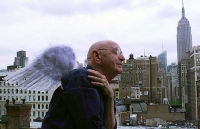
Photographer and artist Duane Michals is the comedy star of a recent biographical documentary film titled "Duane Michals: The Man Who Invented Himself." At 81, Duane performs for the camera like a mischievous kid, full of energy and tomfoolery.
Like many masters, Duane was self-taught, and as such he was (and is still) seen as both a rebel and innovator by his photographics peers, most notably by his groundbreaking use of sequences or series of images rather than a single image to tell a story. Watching the film I easily recognized the freewheeling provocateur and fun-loving photographer I had met years ago. (We've embedded excerpts from the film at the end of the article; be sure to watch them!)
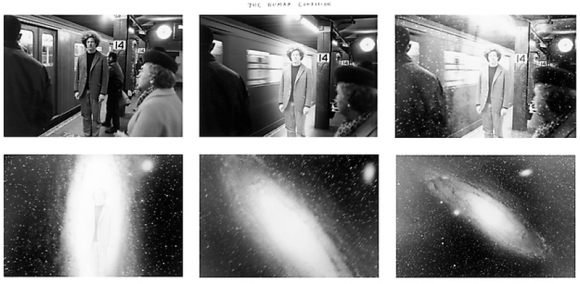
The Human Condition. Photo sequence by Duane Michals.
From humble roots to self-invented man
Born in McKeesport, Pennsylvania in 1932, Duane says that he knew early on that he wasn't made for the rustbelt steel town and was determined to leave the hardscrabble life of his father, grandfather and uncles. He took art classes in Pittsburgh, and like fellow McKeesportian Andy Warhol, he saw "Art" as his ticket to the bigger world.
"I learnt at an early age to take risks and trust my imagination… adventure is the only thing I really believe in." -- Duane Michals
After earning a B.A. from the University of Denver, and serving a stint in the Army, Duane finally got to New York to study design. But he quickly grew restless. Finding himself at loose ends, he went on a holiday to the newly opened Soviet Union -- it changed his life. Using a camera borrowed from a friend and without the least knowledge of photography, he began to take portraits of the people he met: sailors, children, circus performers. When he returned to New York he showed these photos to people and started to get photo assignments.
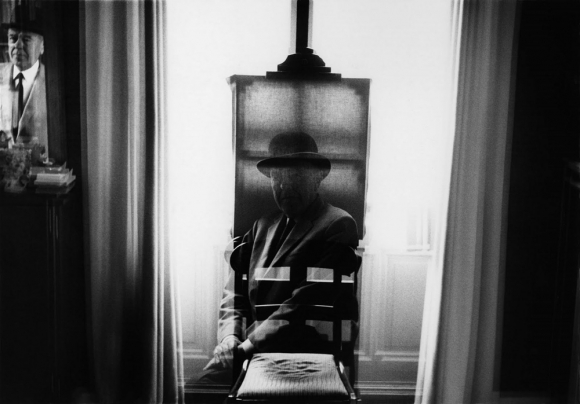
Portrait of Rene Magritte. Photo by Duane Michals.
His photography career takes flight
Then in 1963, after an exhibit of these Russian pictures at the Underground Gallery in New York, his photography career took off. Soon he was shooting for top tier magazines such as Esquire, Mademoiselle and Vogue, and in 1968 he was hired by the Mexican government to photograph the Summer Olympics. His commercial work enabled Duane to buy an airy, light-filled apartment near New York's Union Square.
This apartment soon became the "mises en scène" -- the stage set for his photography. Staging and theatricality are essential elements of Duane's work, and he talks about discovering them in the atmospheric photos of empty Parisian streets taken by Eugene Atget. Duane's world is self-contained, yet with the simplest props he fills it with angels and ghosts and, sometimes even turns it into a Garden of Eden.
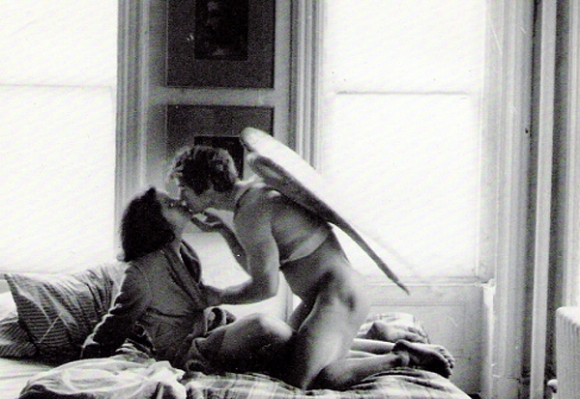
Fallen Angel 2. Photo by Duane Michals.
Stirring up the photographic world
The publication of "Sequences" in 1970 was a turning point in his career, and it created a stir in the photographic world. However, it made Duane something of a pariah in some quarters, for he was breaking too many rules. Paramount was his violation of the sacred 'single' image. For photographers taught to make every single shot count on its own, Duane's cinematic serial imagery verged on blasphemy. He was criticized that his work lacked composition and was absent of decisive moments.
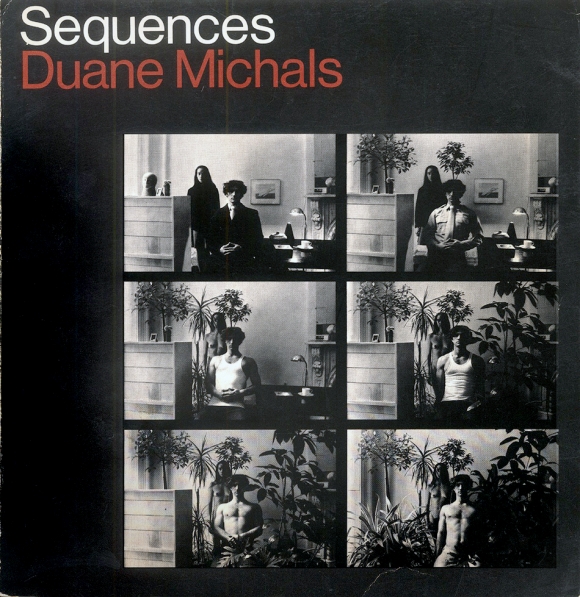
The cover of "Sequences," published in 1970.
The subject matter was troubling too. Duane dealt with metaphors and metaphysical things: the memory of a touch, a chance encounter, loss and death. These reflected his questions about the world rather than his images of the world itself.
"I've hardly ever used my camera to look into someone else's life or experience." -- Duane Michals
Duane even managed to offend gearheads by using a cheap, Argus C-3 camera for "Sequences." While it made taking double exposures easier, it shocked those of us who believed that for real photography you had to use a Leica or Nikon. What was this guy doing?
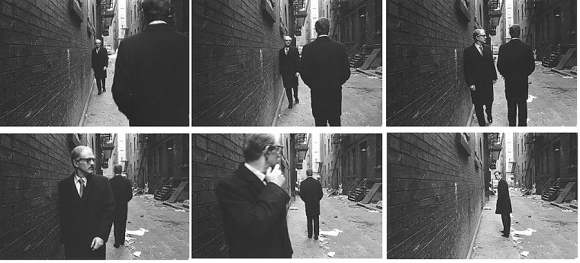
The Encounter. Photo sequence by Duane Michals.
Always the provocateur
Years ago, when I had a studio-slash-gallery in Seattle, I invited Duane to come to the Northwest and conduct a workshop. I had begun to like his work and wanted to meet the man behind this radically different approach to picture making.
He arrived on a typically grey Seattle day, and a group of the workshop participants patiently stood in a light drizzle waiting for him at his hotel. When his taxi pulled up, one of the photographers -- a young woman -- ceremoniously presented Duane with a pair of large, white angel wings she had made. Modeled after the ones he used in "Sequences," Duane was delighted and immediately put them on. Then as a group we entered the somber, wood-paneled hotel with Duane in the lead, happily flapping his new wings.
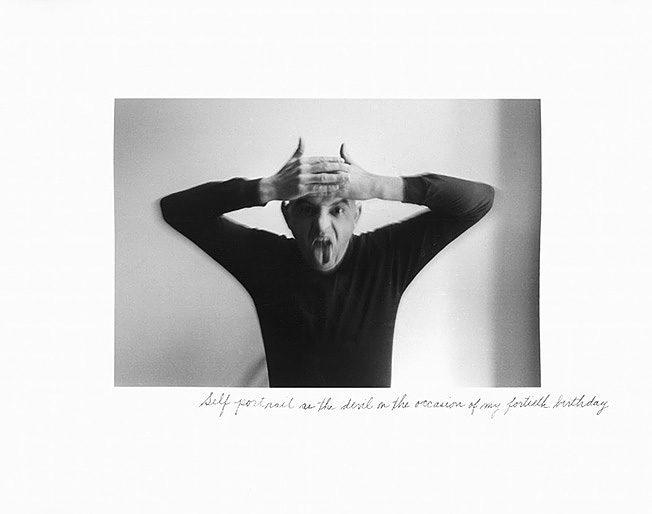
Self Portrait as The Devil. Photo by Duane Michals.
Enjoying the startled looks of the guests in the lobby, he made a point of greeting each one of them and asking their opinion of his wings. It was truly a Surrealist performance, with Duane as The Mad Hatter straight out of his own marvelous version of "Alice in Wonderland."
Widening the gap with traditionalists
After "Sequences," Duane's later books only widened his gap with traditional photography. "In Take One and See Mt. Fujiyama," published in 1976, he returned to making single images but still felt the images by themselves were incomplete. So he began writing short wry titles and messages in their borders.
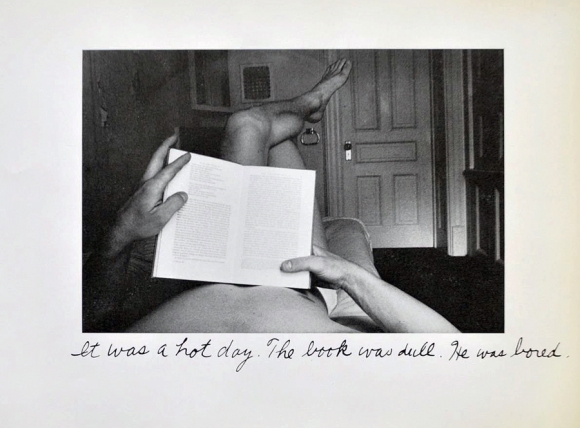
An image from "In Take One and See Mt. Fujiyama."
Photo by Duane Michals
Many photographers couldn't or wouldn't accept how far from standard doctrine Duane had gone. Things got so contentious that when Duane was introduced to Henri Cartier-Bresson at a New York City photo exhibition, the Grand Old Man just sneered and turned on his heels.
"Steve, do you get it?"
Duane was also one of the few photographers of his generation whose work remained outside politics. Although a strong believer in many causes, Duane told us at the workshop that photographers whose aspirations were to do good were kidding themselves. Photographing a poor person, he said, hardly changed that person's life.
This stung me with my Cornell Capa/Cartier-Bresson "concerned photography" background. But it struck a chord in me, and I was a little nervous when Duane got to my portfolio of street shots. He looked at the photos and then at me. He smiled gently and said: "Steve, do you get it? Do you?" That was all. Did I get it? Did I get what he was trying to tell me?
I thought about this a lot, and after the workshop sent Duane a small portfolio of new photos, including a "sequence" I had done of him complete with hand-written titles. A few weeks later I received a package containing a signed copy of "Sequences." In it Duane wrote, "For Steve, in Seattle, OK. Duane."
It is among my most cherished possessions.
Not mellowing with age
Over the years there has been little peace between Duane and the photographic world. He remains a Don Quixote fighting the windmills of dogma and commerce. In 2006, he published a book, "Foto Follies: How Photography Lost its Virginity on the Way to the Bank." It is a scathing satire of the commercialization of "art" photography by photographers like Cindy Sherman, Andreas Gursky and others. In one instance, he caustically calls the portraits of Dutch photographer Rineke Dijkstra "inhuman, stand-and-stare" pictures.
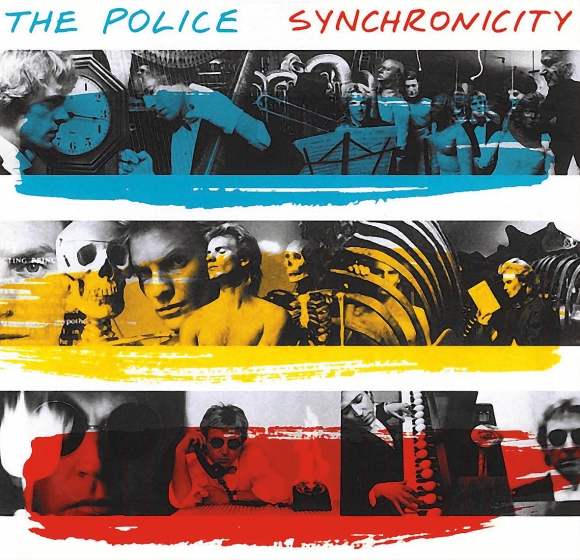
Cover of The Police's "Synchronicity" album. Images by Duane Michals.
Now in his 80s, Duane continues his own adventures. He has retained his sense of marvel and humor which has helped him cope with the Parkinson's Disease that afflicts his long-time companion Fred Gorree, who is confined to a wheelchair. "Fred still makes me laugh a lot and makes me worry more," Duane has said.
This year, Duane began a new series of images for an exhibition to be called "Famous French Writers." In typical Duane fashion, none of the images are of famous French writers. They are anonymous 19th century portraits that Duane paints on.
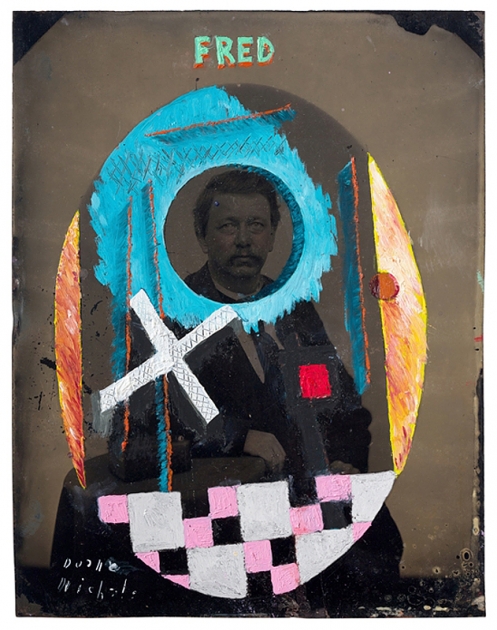
Fred, from "Famous French Writers."
Artwork by Duane Michals.
When I contacted Duane for this article he was on his way to Paris for the November 13 opening of Camille Guichard's documentary about him, "Duane Michals: The Man Who Invented Himself." Duane was enjoying the irony of it all as he had been photography's "bad boy" challenging the very photography establishment that was now going to celebrate and fête him.
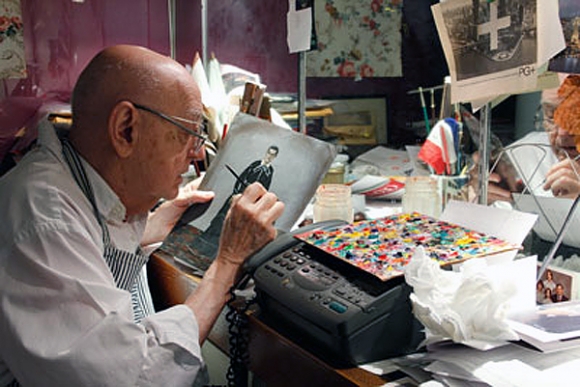
Duane Michals working on a piece for "Famous French Writers."
I asked Duane if he had any anecdotes about his Seattle visit I could use in my post. His response was, "Steve, Seattle is a foggy dim memory -- nothing personal. Everything is. Please do your blog. With my appreciative thank you. We still have Seattle don't we? Duane."
Yes, Duane we will always have Seattle.
Watch a few excerpts from "Duane Michals: The Man Who Invented Himself":